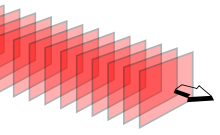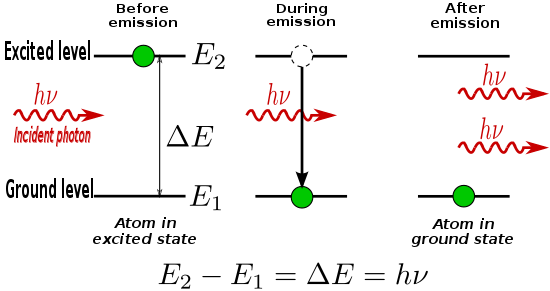假使已經知道波的『相干性』 coherence
在物理學裏,相干性(coherence)指的是,為了產生顯著的干涉現象,波所需具備的性質。更廣義地說,相干性描述波與自己、波與其它波之間對於某種內秉物理量的相關性質。
當兩個波彼此相互干涉時,因為相位的差異,會造成建設性干涉或破壞性干涉。假若兩個正弦波的相位差為常數,則這兩個波的頻率必定相同,稱這兩個波「完全相干」。兩個「完全不相干」的波,例如白熾燈或太陽所發射出的光波,由於產生的干涉圖樣不穩定,無法被明顯地觀察到。在這兩種極端之間,存在著「部分相干」的波。[註 1]
相干性又大致分類為時間相干性與空間相干性。時間相干性與波的頻寬有關;而空間相干性則與波源的有限尺寸有關。
波與波之間的的相干性可以用相干度來量度。干涉可見度是波與波之間的干涉圖樣的輻照度對比,相干度可以從干涉可見度計算出來 。
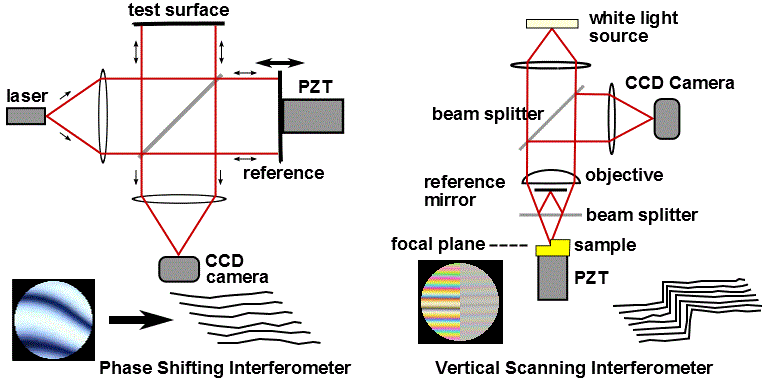
Phase shifting and Coherence scanning interferometers
是能見顯著『干涉現象』之重要性質。因此一個『相干性』高的『波源』,它的『波前』在時空中將能『保形』的吧!?
一七一七年出生的讓‧勒朗‧達朗貝爾 Jean le Rond D’Alembert,是法國的物理學家、數學家和天文學家。他的身世非常可憐,是某位『作家』與一個『騎士』的私生子,出生後即被遺棄在巴黎的一座名為聖‧讓‧勒‧朗 Saint Jean-le-Rond 之教堂附近,故依習俗以教堂的名字取名,後為一位『玻璃匠』收養長大成人。達朗貝爾的一生在很多學科領域裡進行研究,於數學、力學、天文學、哲學 、音樂和社會活動方面都有很多的建樹。一生六十六年間,著有八卷巨著《數學手冊》、力學專著《動力學》、二十三卷的《文集》以及《百科全書》的序言。他的很多的研究成果記載於《宇宙體系的幾個要點研究》中。一七四七年達朗貝爾發表了《Recherches sur la courbe que forme une corde tenduë mise en vibration》Researches on the curve that a tense cord forms [when] set into vibration 的論文;由於他的貢獻,其後之人將『一維波動方程式』以及它的『通用解』general solution 稱之為『達朗貝爾公式』d’Alembert’s formula。
如果說一個『擾動』可以數學上描述為 ![]() ,這是講在
,這是講在 ![]() 時刻,這個擾動的『振幅』
時刻,這個擾動的『振幅』![]() 在
在 ![]() 所構成的座標系上看是一條『波前曲線』。假使這個波前沿著
所構成的座標系上看是一條『波前曲線』。假使這個波前沿著 ![]() 軸『向右』以速度
軸『向右』以速度 ![]() 『保形』等速傳播,那麼
『保形』等速傳播,那麼 ![]() 時刻時,這條曲線就可以用
時刻時,這條曲線就可以用 ![]() 來描述。同樣的如果這個波前沿著
來描述。同樣的如果這個波前沿著 ![]() 軸『向左』以速度
軸『向左』以速度 ![]() 『保形』等速傳播,那麼
『保形』等速傳播,那麼 ![]() 時刻時,這條曲線也可以用
時刻時,這條曲線也可以用 ![]() 來描述。如此這個保形的擾動
來描述。如此這個保形的擾動 ![]() 會滿足
會滿足
![]() 偏微分方程式。
偏微分方程式。
這就將我們帶進了所謂的『一維波動方程式』。由此來推測這個『偏微分方程式』的『通用解』將可以表示為:
在 x 軸上一個向左傳播的波和一個向右傳播的波的疊加。
在數學的描述上,一維波動方程式定義為︰
![]()
![]() 。
。
前面所講的『波前保形』傳播想法,舉例來說它可以是一個『平面波』在『均勻介質』中的傳播,或者說是某種『自然』或『人為』的『線型水面波』 。大自然中的『現象』有時會『指引』數學上『求解』的『方向』,因為終究人們能夠發現的那個現象方程式,也是來自於『大自然』的啊!!難到一個不受外物影響的『波前』它在 ![]() 時刻的『相同相位』──
時刻的『相同相位』── ![]() ── 之點,到了
── 之點,到了 ![]() 時刻就會變成不一樣的嗎??
時刻就會變成不一樣的嗎??
因此物理上的『直覺』,建議著數學上的『變數變換』![]()
,這樣那個方程式就變成了
![]() ,因此
,因此
![]()
,此處的 ![]() 就是『向左』與『向右』的波,一個與
就是『向左』與『向右』的波,一個與 ![]() 有關的『待解』函數,從初始條件可得
有關的『待解』函數,從初始條件可得
![]()
![]()
『求解』再變換回 ![]() 後就得到了達朗貝爾公式
後就得到了達朗貝爾公式
![]()
─── 摘自《【Sonic π】聲波之傳播原理︰原理篇《三》》
那麼可以製造這樣一種『光源』嗎?!
一九一七年,愛因斯坦發表的論文《關於輻射的量子理論》意外的給出了『雷射』的『理論』。所謂『受激發射』之『光子』也︰
Stimulated emission
Stimulated emission is the process by which an incoming photon of a specific frequency can interact with an excited atomic electron (or other excited molecular state), causing it to drop to a lower energy level. The liberated energy transfers to the electromagnetic field, creating a new photon with a phase, frequency, polarization, and direction of travel that are all identical to the photons of the incident wave. This is in contrast to spontaneous emission, which occurs at random intervals without regard to the ambient electromagnetic field.
The process is identical in form to atomic absorption in which the energy of an absorbed photon causes an identical but opposite atomic transition: from the lower level to a higher energy level. In normal media at thermal equilibrium, absorption exceeds stimulated emission because there are more electrons in the lower energy states than in the higher energy states. However, when a population inversion is present, the rate of stimulated emission exceeds that of absorption, and a net optical amplification can be achieved. Such a gain medium, along with an optical resonator, is at the heart of a laser or maser. Lacking a feedback mechanism, laser amplifiers and superluminescent sources also function on the basis of stimulated emission.
Overview
Electrons and their interactions with electromagnetic fields are important in our understanding of chemistry and physics. In the classical view, the energy of an electron orbiting an atomic nucleus is larger for orbits further from the nucleus of an atom. However, quantum mechanical effects force electrons to take on discrete positions in orbitals. Thus, electrons are found in specific energy levels of an atom, two of which are shown below:
When an electron absorbs energy either from light (photons) or heat (phonons), it receives that incident quantum of energy. But transitions are only allowed between discrete energy levels such as the two shown above. This leads to emission lines and absorption lines.
When an electron is excited from a lower to a higher energy level, it will not stay that way forever. An electron in an excited state may decay to a lower energy state which is not occupied, according to a particular time constant characterizing that transition. When such an electron decays without external influence, emitting a photon, that is called “spontaneous emission“. The phase and direction associated with the photon that is emitted is random. A material with many atoms in such an excited state may thus result in radiation which has a narrow spectrum (centered around one wavelength of light), but the individual photons would have no common phase relationship and would also emanate in random directions. This is the mechanism of fluorescence and thermal emission.
An external electromagnetic field at a frequency associated with a transition can affect the quantum mechanical state of the atom without being absorbed. As the electron in the atom makes a transition between two stationary states (neither of which shows a dipole field), it enters a transition state which does have a dipole field, and which acts like a small electric dipole, and this dipole oscillates at a characteristic frequency. In response to the external electric field at this frequency, the probability of the electron’s entering this transition state is greatly increased. Thus, the rate of transitions between two stationary states is increased beyond that of spontaneous emission. A transition from the higher to a lower energy state produces an additional photon with the same phase and direction as the incident photon; this is the process of stimulated emission.
History
Stimulated emission was a theoretical discovery by Einstein[1][2] within the framework of the old quantum theory, wherein the emission is described in terms of photons that are the quanta of the EM field. Stimulated emission can also occur in classical models, without reference to photons or quantum-mechanics.[3] (See also Laser#history )
誰能料『實踐』過程中,創生了『 ABCD 矩陣分析』耶︰
為什麼『矩陣光學』會將
光線轉換矩陣分析
光線轉換矩陣分析(又稱ABCD矩陣分析),是用於某些光學系統,特別是雷射領域的一種光線追蹤技術。它包含一個描述光學系統的光線轉化矩陣(ray transfer matrix),這個矩陣與一代表光線的向量相乘之後,可以得到光線在該系統中的運行軌跡。這類的分析也被應用於加速器物理(accelerator physics)中,用以追蹤通過粒子加速器中磁鐵裝置的粒子,詳情請見電子光學。
以下介紹的技術使用了近軸逼近法,此逼近法意即假設所有光線相對於系統的光軸(optical axis)都處於小角度(θ為徑度)、短距離(x)。[1]
稱作『ABCD 矩陣分析』呢?Justin Peatross 和 Michael Ware 兩位先生認為此一命名相當平淡了無新意!傳聞此事淵源久矣,恐來自
《雷射光束與共振腔》
這一篇文章︰



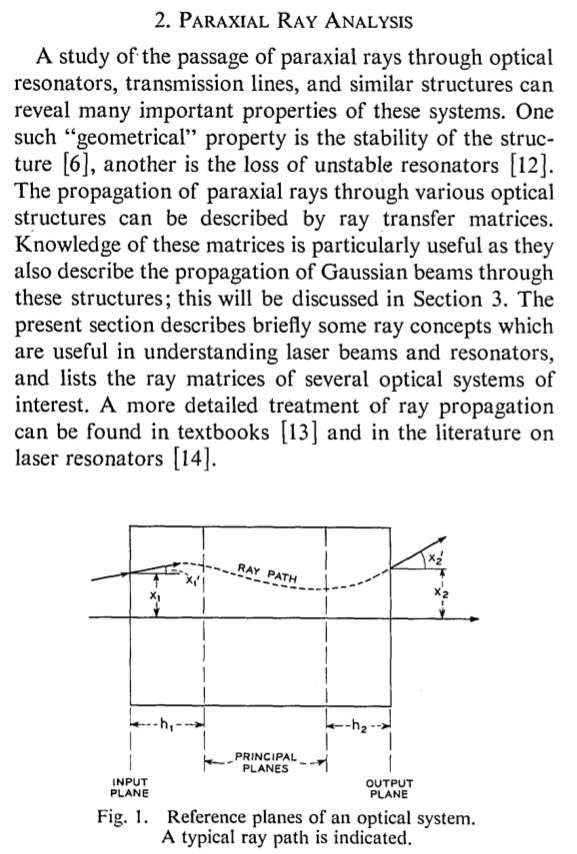
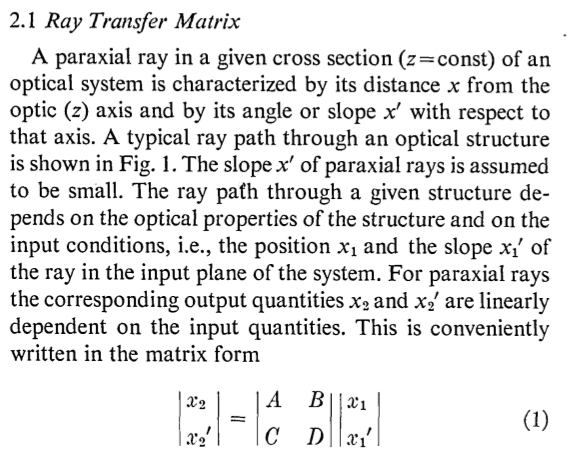
該手稿之主旨是『回顧』,目的在『範例』和『應用』。也許果如文中所言,祇為著『方便』表達故,使用『ABCD』之名目耶??亦或因著強調『入門』,特用『ABC … 』的乎!!
莫道『蕭規曹隨』而已也??不知『名正言順』事焉成!!
─── 摘自《光的世界︰矩陣光學四》
為能計算『激光之共振腔』乎!
終於世界迎來了『雷射』矣︰
Laser
A laser is a device that emits light through a process of optical amplification based on the stimulated emission of electromagnetic radiation. The term “laser” originated as an acronym for “light amplification by stimulated emission of radiation“.[1][2] The first laser was built in 1960 by Theodore H. Maiman at Hughes Research Laboratories, based on theoretical work by Charles Hard Townes and Arthur Leonard Schawlow. A laser differs from other sources of light in that it emits light coherently. Spatial coherence allows a laser to be focused to a tight spot, enabling applications such as laser cutting and lithography. Spatial coherence also allows a laser beam to stay narrow over great distances (collimation), enabling applications such as laser pointers. Lasers can also have high temporal coherence, which allows them to emit light with a very narrow spectrum, i.e., they can emit a single color of light. Temporal coherence can be used to produce pulses of light as short as a femtosecond.
Among their many applications, lasers are used in optical disk drives, laser printers, and barcode scanners; DNA sequencing instruments, fiber-optic and free-space optical communication; laser surgery and skin treatments; cutting and welding materials; military and law enforcement devices for marking targets and measuring range and speed; and laser lighting displays in entertainment.
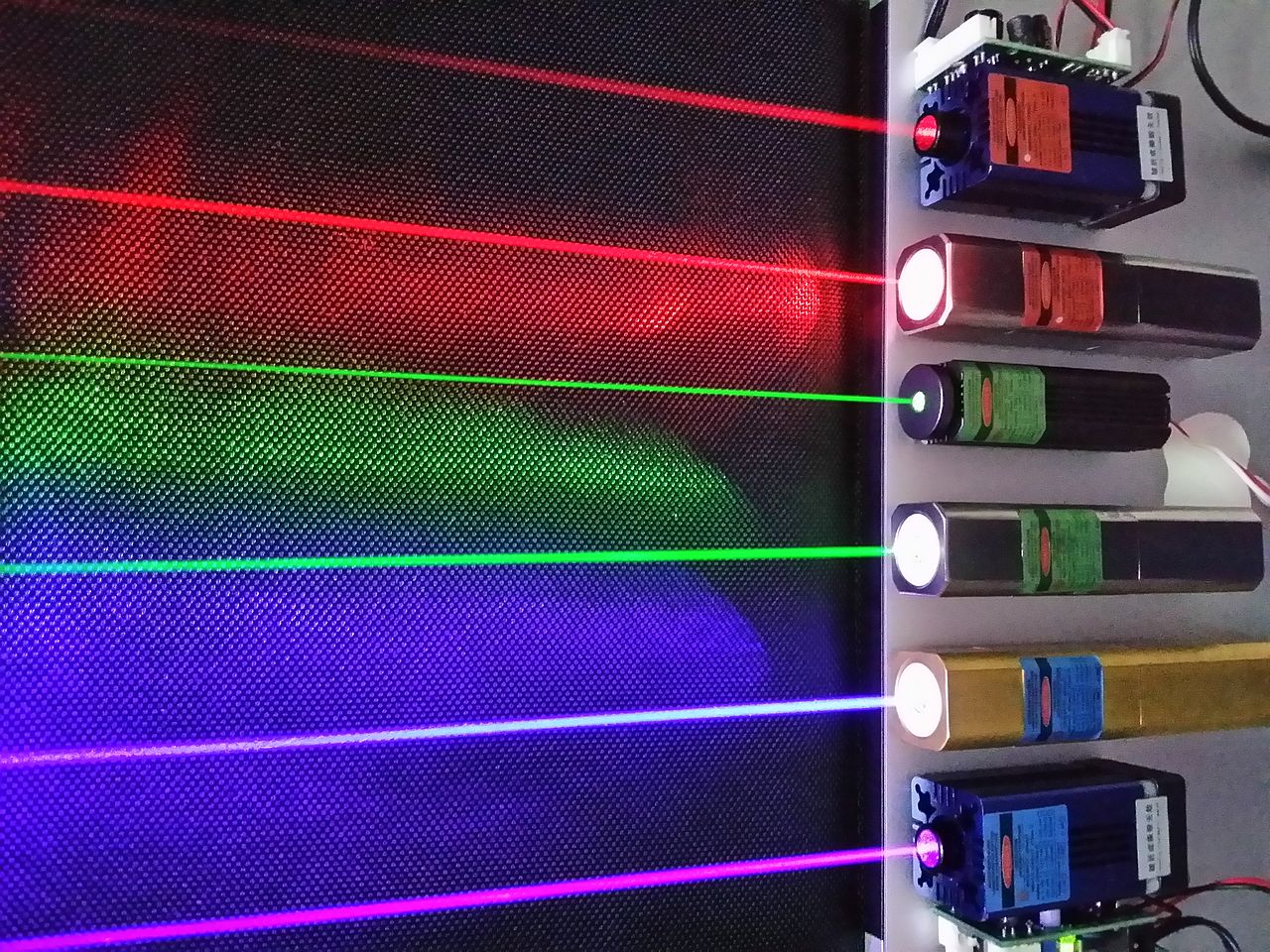
Red (660 & 635 nm), green (532 & 520 nm) and blue-violet (445 & 405 nm) lasers
Fundamentals
Lasers are distinguished from other light sources by their coherence. Spatial coherence is typically expressed through the output being a narrow beam, which is diffraction-limited. Laser beams can be focused to very tiny spots, achieving a very high irradiance, or they can have very low divergence in order to concentrate their power at a great distance.
Temporal (or longitudinal) coherence implies a polarized wave at a single frequency whose phase is correlated over a relatively great distance (the coherence length) along the beam.[4] A beam produced by a thermal or other incoherent light source has an instantaneous amplitude and phase that vary randomly with respect to time and position, thus having a short coherence length.
Lasers are characterized according to their wavelength in a vacuum. Most “single wavelength” lasers actually produce radiation in several modes having slightly differing frequencies (wavelengths), often not in a single polarization. Although temporal coherence implies monochromaticity, there are lasers that emit a broad spectrum of light or emit different wavelengths of light simultaneously. There are some lasers that are not single spatial mode and consequently have light beams that diverge more than is required by the diffraction limit. However, all such devices are classified as “lasers” based on their method of producing light, i.e., stimulated emission. Lasers are employed in applications where light of the required spatial or temporal coherence could not be produced using simpler technologies.
Terminology
The word laser started as an acronym for “light amplification by stimulated emission of radiation”. In modern usage, the term “light” includes electromagnetic radiation of any frequency, not only visible light, hence the terms infrared laser, ultraviolet laser, X-ray laser, gamma-ray laser, and so on. Because the microwave predecessor of the laser, the maser, was developed first, devices of this sort operating at microwave and radio frequencies are referred to as “masers” rather than “microwave lasers” or “radio lasers”. In the early technical literature, especially at Bell Telephone Laboratories, the laser was called an optical maser; this term is now obsolete.[5]
A laser that produces light by itself is technically an optical oscillator rather than an optical amplifier as suggested by the acronym. It has been humorously noted that the acronym LOSER, for “light oscillation by stimulated emission of radiation”, would have been more correct.[6] With the widespread use of the original acronym as a common noun, optical amplifiers have come to be referred to as “laser amplifiers”, notwithstanding the apparent redundancy in that designation.
The back-formed verb to lase is frequently used in the field, meaning “to produce laser light,”[7] especially in reference to the gain medium of a laser; when a laser is operating it is said to be “lasing.” Further use of the words laser and maser in an extended sense, not referring to laser technology or devices, can be seen in usages such as astrophysical maser and atom laser.
